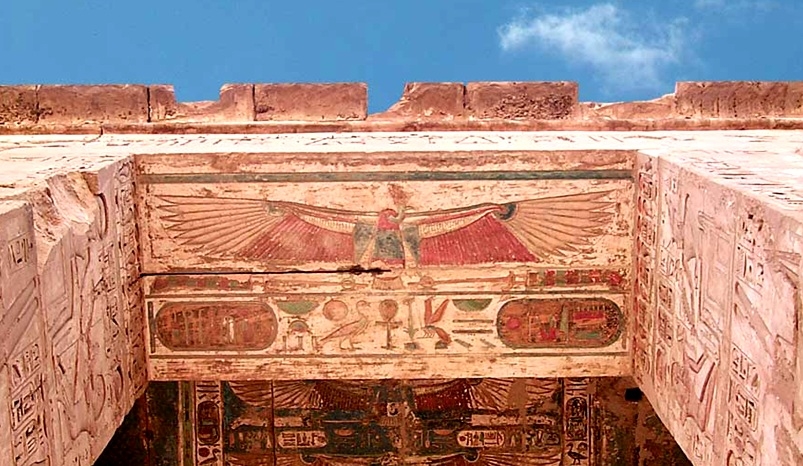Medinet Habu Temple
Medinet Habu is the Arabic name for the mortuary temple of Ramses III, Located on the west bank of Luxor, In ancient times Medinet Habu was known as Djanet and according to ancient belief was the place were Amun first appeared.
Medinet Habu Temple is located at the southern tip of Luxor necropolis, the Temple is surrounded by a thick wall containing a large space of 66150 square meters, Medinet Habu is the second largest ancient temple ever discovered in Egypt, The temple was built specifically as a mortuary temple by Ramesses III who was the second pharaoh of the 20th dynasty, and also the last great pharaoh of the New Kingdom. While the temple was built for Ramesses III to practice mortuary rituals, it was also used as a place for worshipping the god Amun.
This building consists of a huge gate in the shape of a Syrian fort and is decorated with battle scenes depicting the king's wars in Syria. Through the gate to the right is a shrine dating back to the 18th Dynasty, There is also a wide-open court that leads to a huge pylon, with both towers decorated in battle scenes, On one tower the king wearing the red crown with his "Ka" or "double", smiting his enemies in front of Re-Horakhty, On the other tower, the king is represented with the red crown of Lower Egypt, smiting his enemies in front of the god Amon Ra.
Temple of Ramses III at Medinat Habu:
Temple of Ramses III is not less important than the temple of Habu, as it was constructed during the 18th dynasty, it also includes the chapels of Nitoket, Amenirdis I and Shepenwepet II, who are considered to be the wives of the ancient Egyptian god Amon, and moreover these chapels were added to this temple by Tutmose II and Hatsepsut, as well as it had had some renovations by Ptolemaic kings during the 25th dynasty.






